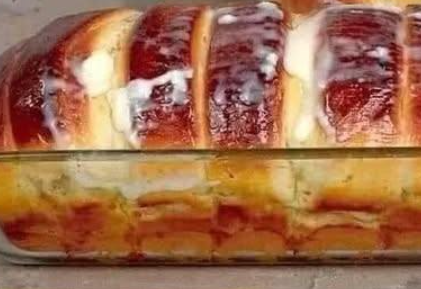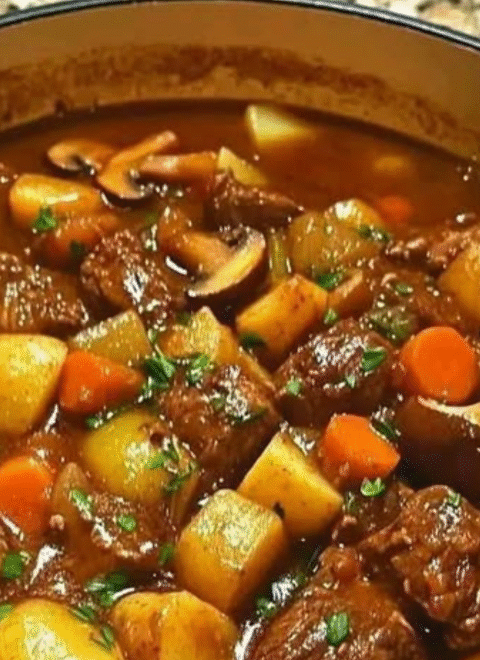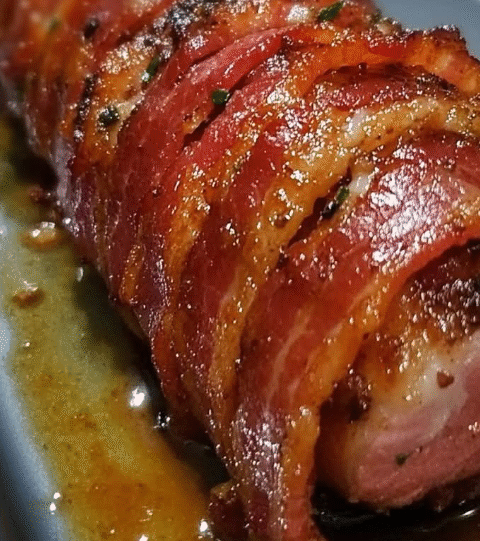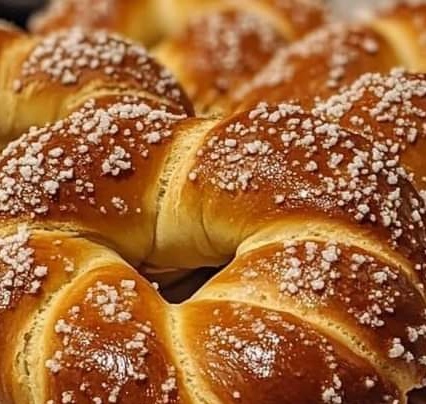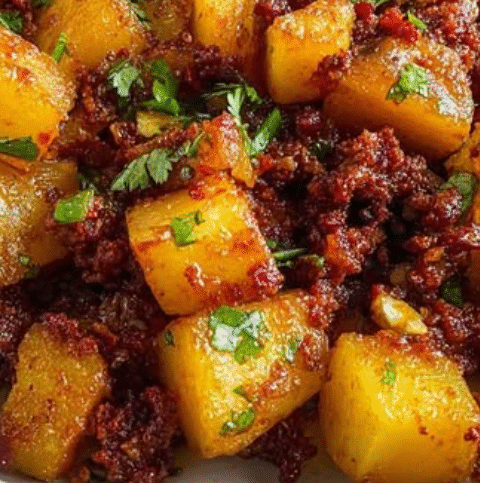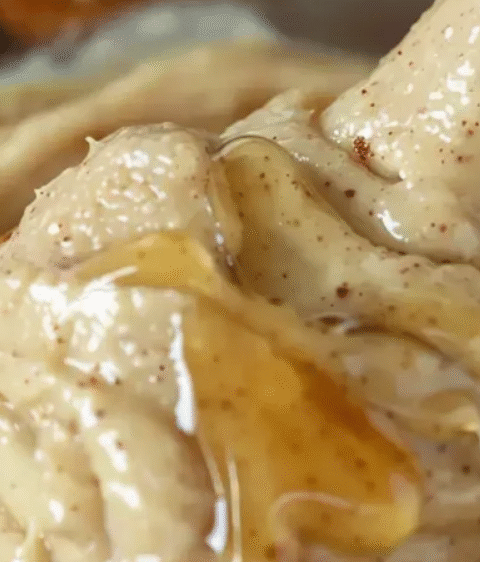Fluffy Condensed Milk Bread: A Soft & Sweet Delight 🍞
Imagine tearing into a loaf that’s pillowy soft, subtly sweet, with a tender crumb that melts in your mouth. This Fluffy Condensed Milk Bread delivers just that—richness from condensed milk, aroma from yeast, and an irresistible golden crust. Whether for breakfast, afternoon tea, or just because, this bread is bound to become a favorite in your kitchen.
Why This Bread is So Special
- Condensed milk adds sweetness, moisture, and richness without needing a lot of sugar.
- The kneading and double‑proofing (rising) steps give it stretch and loft, resulting in a soft crumb.
- Brushing the warm buns with a butter + condensed milk glaze gives a shiny, tender top as well as extra flavor.
Ingredients You’ll Need
| Ingredient | Amount | Role in the Bread |
|---|---|---|
| Warm milk | 240 ml (1 cup) | Activates yeast; gives moisture and softness. |
| Condensed milk | 75 g (¼ cup) + extra later | Adds sweetness and body. |
| Egg | 1 large | Helps enrich dough; improves crumb and color. |
| Sugar | 30 g (2 tbsp) | Feeds yeast and enhances sweetness. |
| Dry yeast | 7 g (2¼ tsp) | Leavening; makes bread rise and get fluffy. |
| Flour | 520 g (≈4¼ cups) | Structure. Use good bread or all‑purpose flour. |
| Salt | 1 tsp | Balances flavor; controls yeast activity. |
| Butter (softened) | 50 g (¼ cup) | Fat for tenderness and richness. |
| Butter + additional condensed milk (for glaze) | 45 g butter + 45 g condensed milk | To brush buns warm; gives sheen and sweet finish. |
Step‑by‑Step Instructions
1. Activate the yeast and combine liquids
Warm the milk (should be lukewarm, around 37‑40 °C / 98‑104 °F). Whisk in sugar and the first portion of condensed milk. Then add the dry yeast and the egg; whisk again until smooth.
2. Mix the dry ingredients & form dough
In a large bowl, combine flour + salt. Pour the liquid mixture in and work with dough hooks (or by hand) until it starts to come together.
3. Knead in the butter
Add the softened butter and knead for about 10 minutes until the dough is smooth, elastic, and passes the “windowpane test” (you can stretch a piece thin without it tearing easily).
4. First rise
Cover the dough and let it rest / proof for about 1 hour, or until doubled in size. Warm, draft‑free environment helps.
5. Shape into logs and cut buns
Divide the dough: take about ⅔, roll it into a rectangle (≈25×40 cm), roll that into a log, then cut into pieces. Place in your prepared baking pan. With the leftover ⅓ dough, repeat for smaller buns if desired.
6. Second rise
Allow the shaped buns to rise again for about 1 hour until puffy.
7. Bake
Preheat oven to 180 °C (350 °F). Brush the tops of buns with egg wash (egg + a little water or milk). Bake 25‑30 minutes for larger buns, or about 20 minutes for smaller ones, until golden‑brown on top and hollow‑sounding when tapped.
8. Glaze & cool
While still warm, whisk together equal parts butter + condensed milk. Brush this mixture over each bun. Then, remove from molds once buns have fully cooled.
Tips for Perfectly Fluffy Bread
- Ensure milk is warm, not hot — high heat kills yeast.
- Knead well. A smooth, elastic dough is key. Using a stand mixer can help.
- Don’t rush the two rises (proofing). Let the dough fully double; under‑proofed dough yields dense texture.
- Egg wash helps color and finish; the butter‑condensed milk glaze adds extra moisture and gloss.
- If the top browns too quickly during baking, tent with aluminum foil.
- Use room‑temperature ingredients (except milk, which must be warm for yeast), especially eggs and butter.
Nutrition & Health Benefits
| Nutrient | Estimated Amount per Bun** | Why It’s Good / Considerations |
|---|---|---|
| Calories | ≈ 220‑280 kcal | Energy boost; keep in moderation if watching intake. |
| Carbohydrates | ≈ 30‑40 g | Main energy source; choose whole grain flour if you want more fiber. |
| Protein | ≈ 5‑7 g | From egg and milk; helps with satiety. |
| Fat | ≈ 8‑12 g | Butter adds richness; saturated fats moderate. |
| Sugar | ≈ 6‑10 g | From condensed milk and added sugar; adjust if needed. |
**Based on large bun; values depend on actual size and ingredients used.
Expert Advice from Chef Gordon Ramsay
“The secret to extraordinary softness in bread like this is patience,” Chef Gordon Ramsay says. “Don’t rush the proofing steps, and allow your dough to fully relax between shape and bake. A well‑glazed top brings both flavor and moisture—make sure your glaze is applied while the bread is warm, not hot.”
Health & Safety Considerations
- Always use fresh yeast; expired yeast might not make the bread rise well.
- Ensure your work surfaces, bowls, and equipment are clean to avoid contamination.
- Egg wash should be applied carefully; if consuming raw egg residue (e.g. from handling), ensure proper hand hygiene.
- Bake to full doneness: under‑baked dough can harbor raw gluten and starch that’s harder to digest.
- Store bread in cool, dry place. If you refrigerate, reheat slightly to restore texture.
Frequently Asked Questions (FAQs)
- 1. Can I use instant yeast instead of dry (active) yeast?
- Yes — if using instant yeast, you can mix it directly with dry ingredients, reducing or skipping the proofing in liquid. But ensure the temperature of milk isn’t too hot, or it could kill the yeast.
- 2. What if my dough is too sticky or too dry?
- If it’s too sticky, add a tablespoon of flour at a time until manageable. If too dry, add a little warm milk (table‑spoon by tablespoon), mixing until the dough comes together but remains soft.
- 3. How can I tell when the bread is fully baked?
- The top should be golden brown, and the bread should sound hollow when tapped underneath. Internal temperature around 90‑95 °C (195‑205 °F) is good if you use a thermometer.
- 4. Can I make this bread with whole wheat or a mix of flours?
- You can substitute up to about 25‑30 % of the flour with whole wheat to boost fiber. More than that may affect softness unless additional hydration and longer kneading are given.
- 5. Is condensed milk absolutely necessary?
- It gives sweetness and richness. You could reduce or omit it, substituting regular milk and sugar, but texture and flavor will differ (less sweet, less moist).
- 6. Can I freeze the buns?
- Yes. Once baked and cooled, wrap well and freeze. When needed, thaw at room temperature and reheat slightly to refresh the crust and softness.
- 7. How do I avoid a crust that’s too thick or hard?
- Brush the dough with milk or water before baking; ensure your oven isn’t too dry. Also, glaze while warm helps keep the crust tender.
- 8. How long does this bread stay fresh?
- Store in an airtight container. At room temperature, it stays soft for about 2‑3 days. For longer, freeze or refrigerate, but warm up before eating.
- 9. Can I add flavors or inclusions (e.g. raisins, chocolate chips)?
- Yes — add them AFTER the first rise and before shaping. But don’t overload, as additional moisture or weight can hinder rising.
- 10. What happens if I skip the second proof (rising after shaping)?
- You’ll get denser buns. The second rise lets the shaped dough relax and develop loft; skipping it almost always results in tighter crumb and less fluff.
Variations & Serving Suggestions
- Add a touch of vanilla or citrus zest to the dough for extra aroma.
- Fill buns with cream, jam, or chocolate before the final rise for sweet rolls.
- Serve with butter, honey, or even a lightly whipped cream for dessert style.
- Use as sandwich buns — pair with savory fillings (turkey, cheese) to contrast the sweet bread.
Internal Resources & Related Reads
For more about baking and bread‑making techniques, check out Bread Making Tips and Quick Yeast Bread Recipes on our site.
Conclusion
This Fluffy Condensed Milk Bread brings together sweetness, softness, and rich dairy goodness in each warm bite. It takes some time in proofing and careful kneading, but those steps are what make it sublime. Whether you enjoy it fresh from the oven with your favorite spread or sweet glaze, this bread is sure to impress. Happy baking! 🍯🥖
